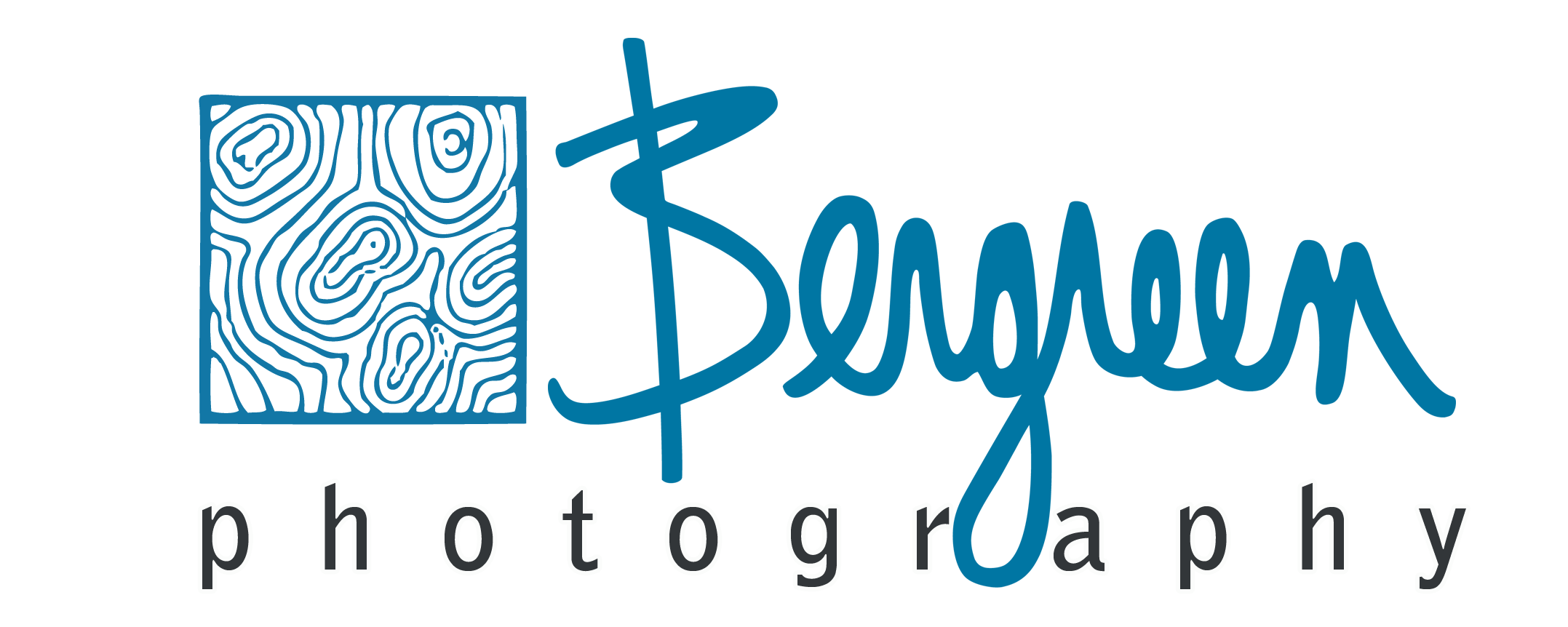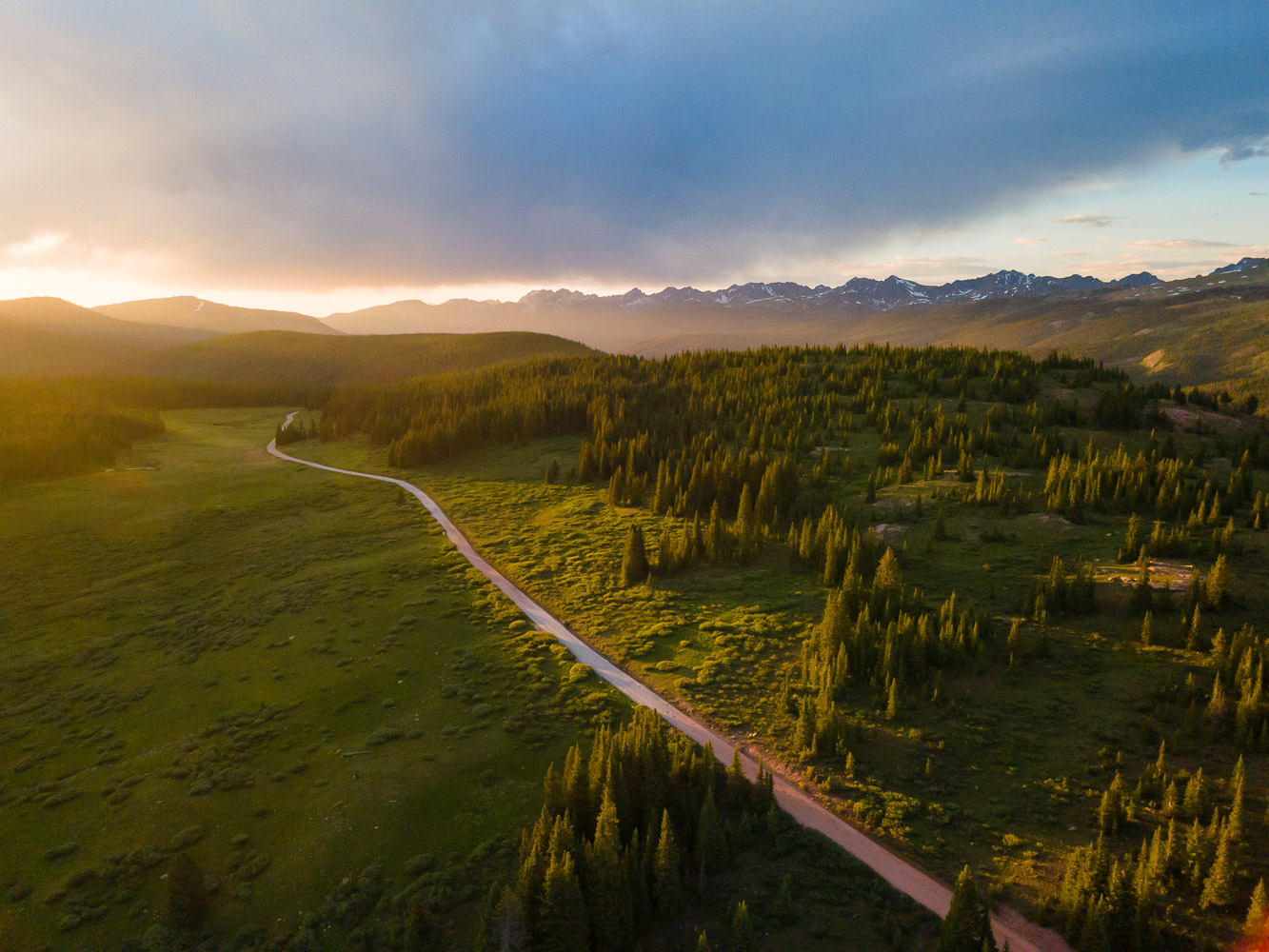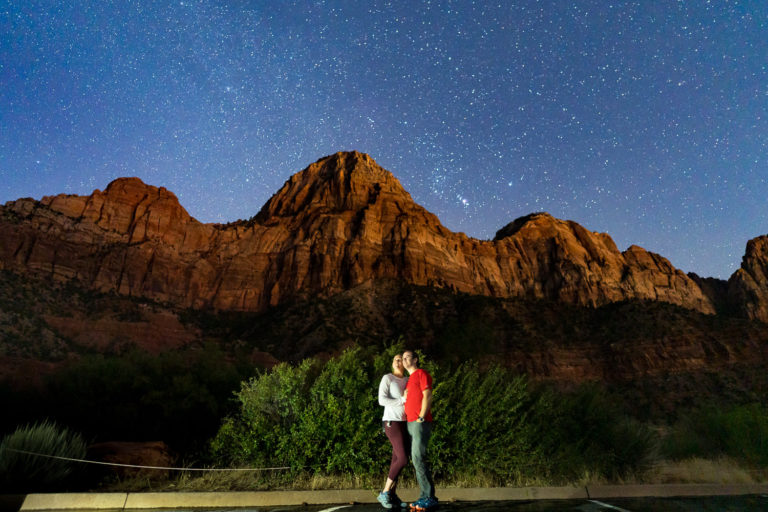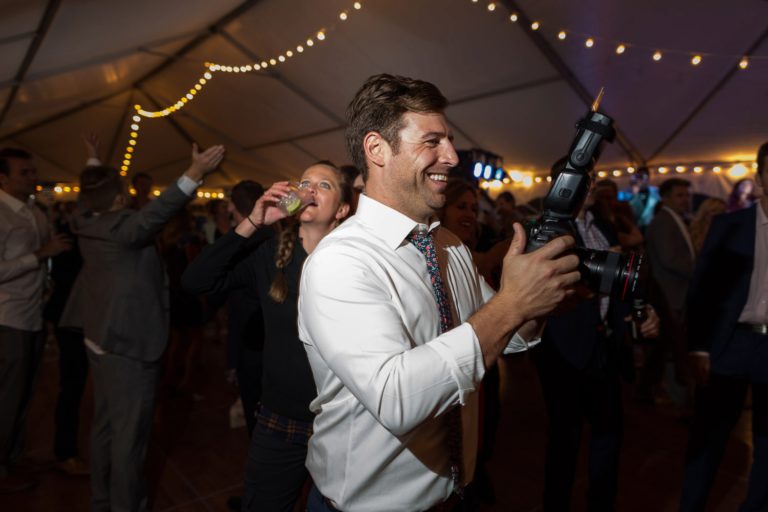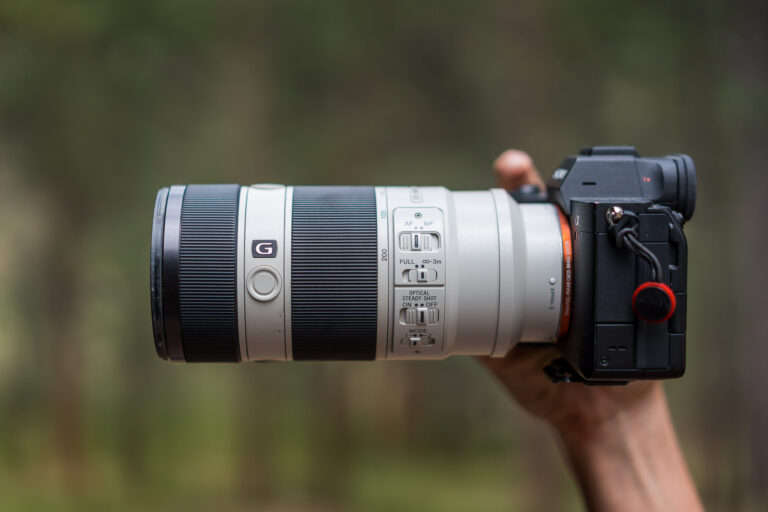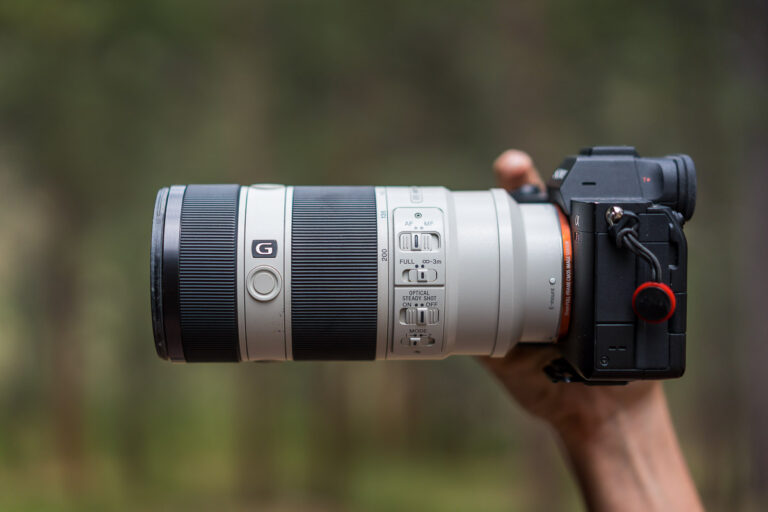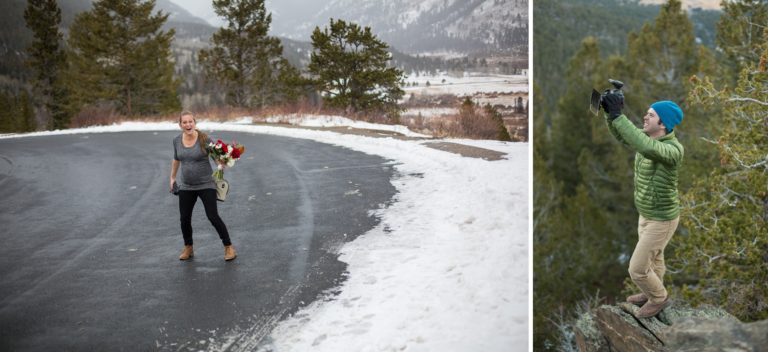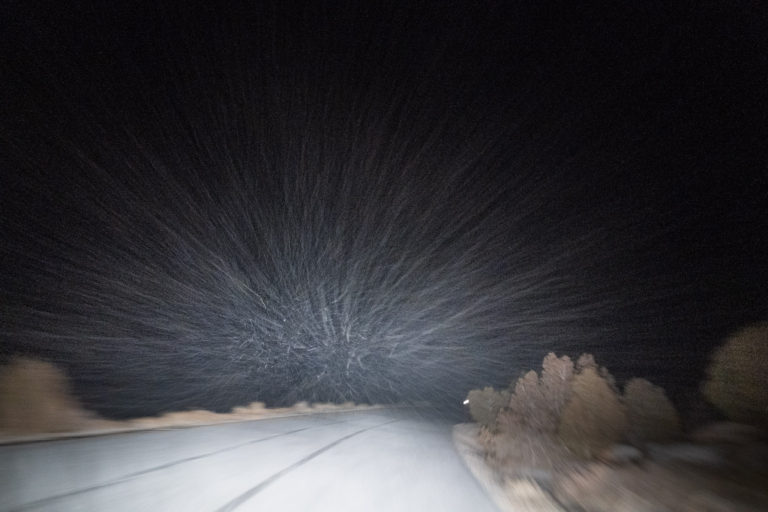Mountain Landscape Photography Guide
We moved to Colorado for the mountains. Something is humbling and awe-inspiring about standing in these incredible mountains and pondering life. It’s what inspired us to take our love of mountain landscape photography and turn it into a career.
After over a decade as professional photographers, there are a lot of things that we have learned. But some things remain true, namely, a love of the mountains is the first step towards impactful mountain photos. A love and respect for nature will help you get the shot more than having the best camera in the world.
As we walk through this guide and talk about light, lenses, and weather, I hope you get a sense of what the mountains have taught us during the time we’ve spent in their beauty. If you just want to order some mountain photography prints, check out our print shop!
Mountain Landscape Photography Tips
Below are some tips to help take your mountain photography to the next level. Here’s an outline of what we’re going to answer and discuss in order to improve your photos.
- What is mountain photography?
- When should you shoot mountain photography?
- What are the best lenses?
- Framing and composition techniques to know
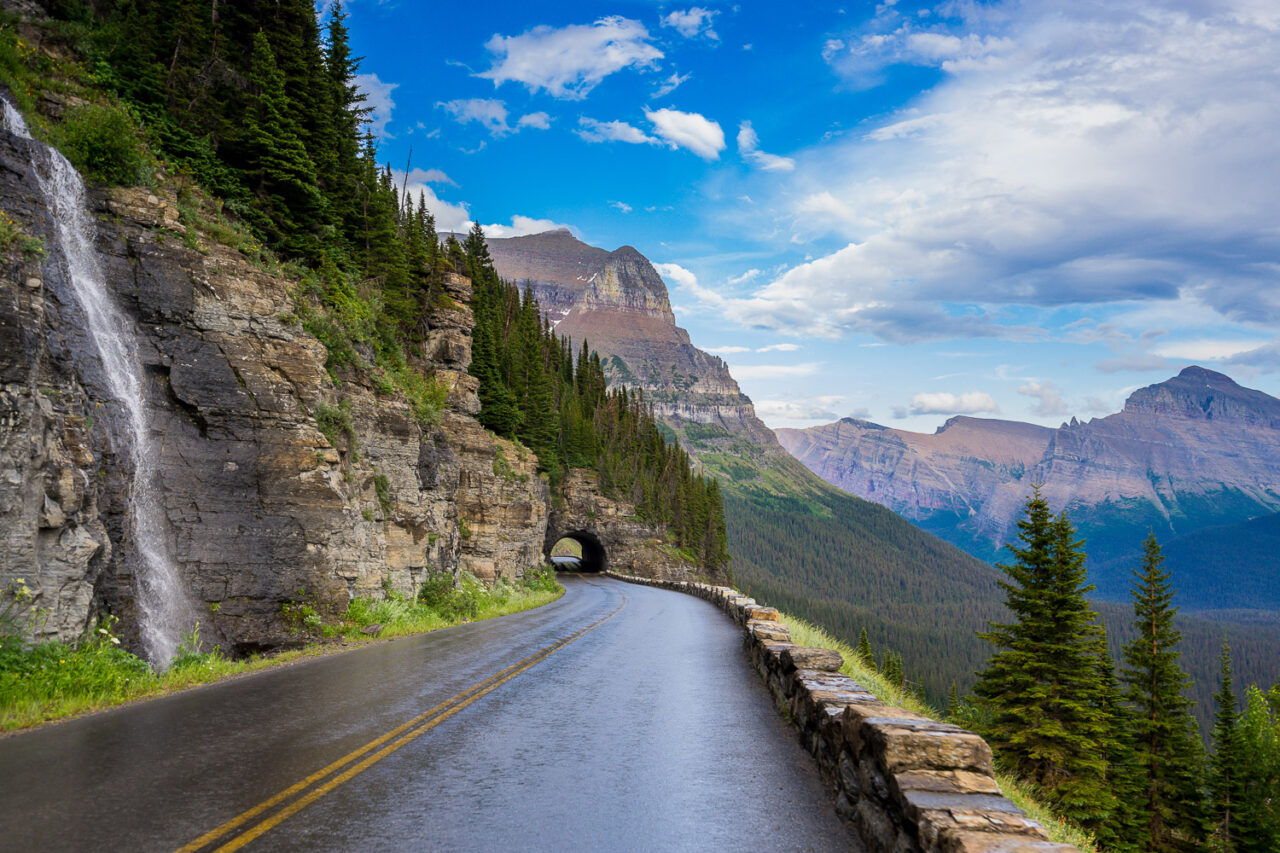
What Makes a Mountain Landscape and is it Different than other types of Landscape Photography?
There are numerous types of landscape photography because there are various types of landscapes, photography styles, and photography techniques that photographers implement. Mountain landscapes are, in my opinion, one of the most challenging and rewarding because you often have to be in the right place at the right time which can mean a long hike with your gear in rugged terrain.
As we talk through the types of landscapes, landscape photography styles, and photography techniques, you’ll get an idea of what you find most interesting or impactful. You’ll also see techniques and when they are most useful. From there you can determine what tools you need to create the mountain images you’re interested in.
Types of landscapes:
There are so many different types of landscapes to photograph from mountains to the coast. There are seascapes, deserts, plains, forests, jungles, valleys, rainforests, shrublands, woodlands, wetlands, tundra, and rivers. I think the most important is to find the types of landscapes that you are personally passionate about and find a meaningful way to translate them into a striking image.
Types of landscape photography styles:
Landscape photography styles include representative landscapes which are realistic and descriptive pictures of a place, impressionistic are more surreal and ethereal, and abstracts are more about design than a realistic image. For the most part, we specialize in representative photography and our mountain photography shows what the mountains look like.
By finding a small intricate scene, you can often create something more abstract but our passion is for wide vistas in great light. By shooting in unique conditions and finding simple compositions, landscapes can be distilled down into impressionistic images. This can be a fun challenge but is often limited by the weather and conditions.
Landscape photography techniques:
When it comes to landscape photography techniques, photographers implement a variety of skills to capture the scene in front of them. Some landscape photography techniques include astrophotography, long-exposure photography, drone photography, and timelapse photography. Other more basic techniques are things like using a tripod and slow shutter.
Many people use a tripod so they can increase their aperture to have a tack-sharp image through the depth of the frame. This can also be accomplished through focus stacking and digital compositing. However you approach the scene, it’s important to think through the balance of elements and realize that things will look much flatter when displayed on a two-dimensional display.
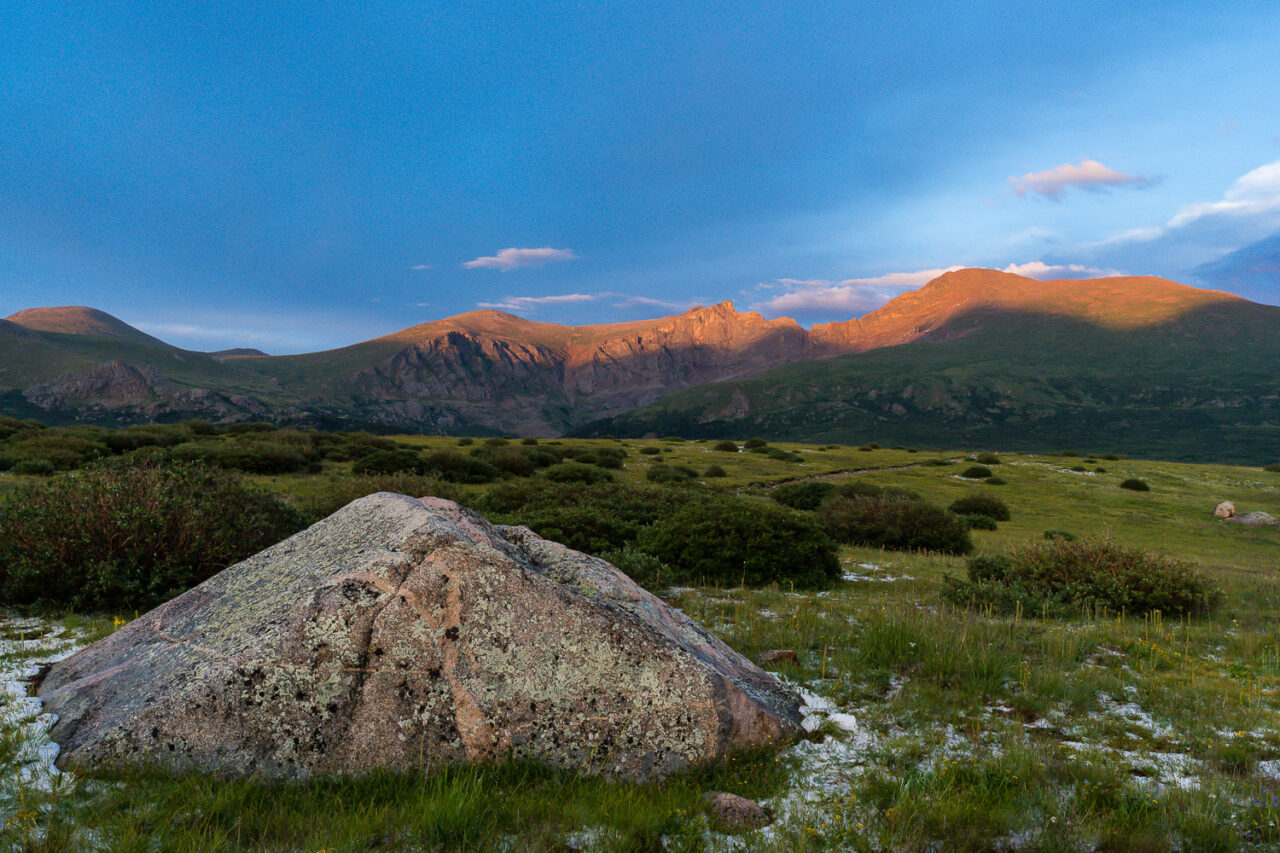
Timing is Everything: Time of Day to Photograph Mountains
The best time of day to photograph mountains depends on what you’re trying to capture but sunrise, sunset, blue hour, or night are my favorite times. This usually means that you have to be patient and plan, which makes mountain photography appealing and challenging. If you want to showcase alpine glow on rugged jagged peaks, you have to time it perfectly.
The time of day isn’t the only time to consider, you should also consider the time of year. If you’re looking to photograph wildflowers, fall colors, or snow, you must plan for that. If you want a rainbow or epic storm clouds in the sky, you’ll need to plan for that too, and watch the weather. If star photos are your interest, you’ll need to understand the sky and know when the moon rises and sets and how it will impact your images.
Mountain scenes are so dramatic in person that you have to show them in their best light (pun intended) if you want the photographs to do the mountains justice. Capturing the beauty, scale, and majesty of a place takes intentionality. Our best shots are typically the ones we worked the hardest for whether that’s hiking to a remote location in summer, chasing the unpredictability of spring, or braving the cold of winter.
Apps and Tools for Helping with Timing
When I have an image of a certain location in mind, it’s time to enter the planning phase. Often you can utilize a variety of tools to make this process faster and more effective. The first step is to identify where you want to be and at what time. One of my favorite tools for this is The Photographers Emphemeris 3d. It’s a visual display of how the sun and moonlight up a landscape. You can see where the sun first hits a valley or peak. This tool takes a little time to get familiar with but the phone app is relatively quick to learn.
My second favorite tool for using on location is another app called PhotoPills. This app is really effective at visualizing the light from a certain spot. It is a really powerful tool that can also plan similarly to TPE 3d but I find it a little harder to use unless I’m on-site at my chosen location.
After I’ve established the time and place, I’ll think through the distance and elevation gain to get to the spot I have in mind and make a rough schedule of when to leave to get the shot. Alltrails.com is a great resource for hiking distances. Lastly, I’ll check in with weather.gov to make sure the forecast looks favorable for the type of pictures I’m looking to create.
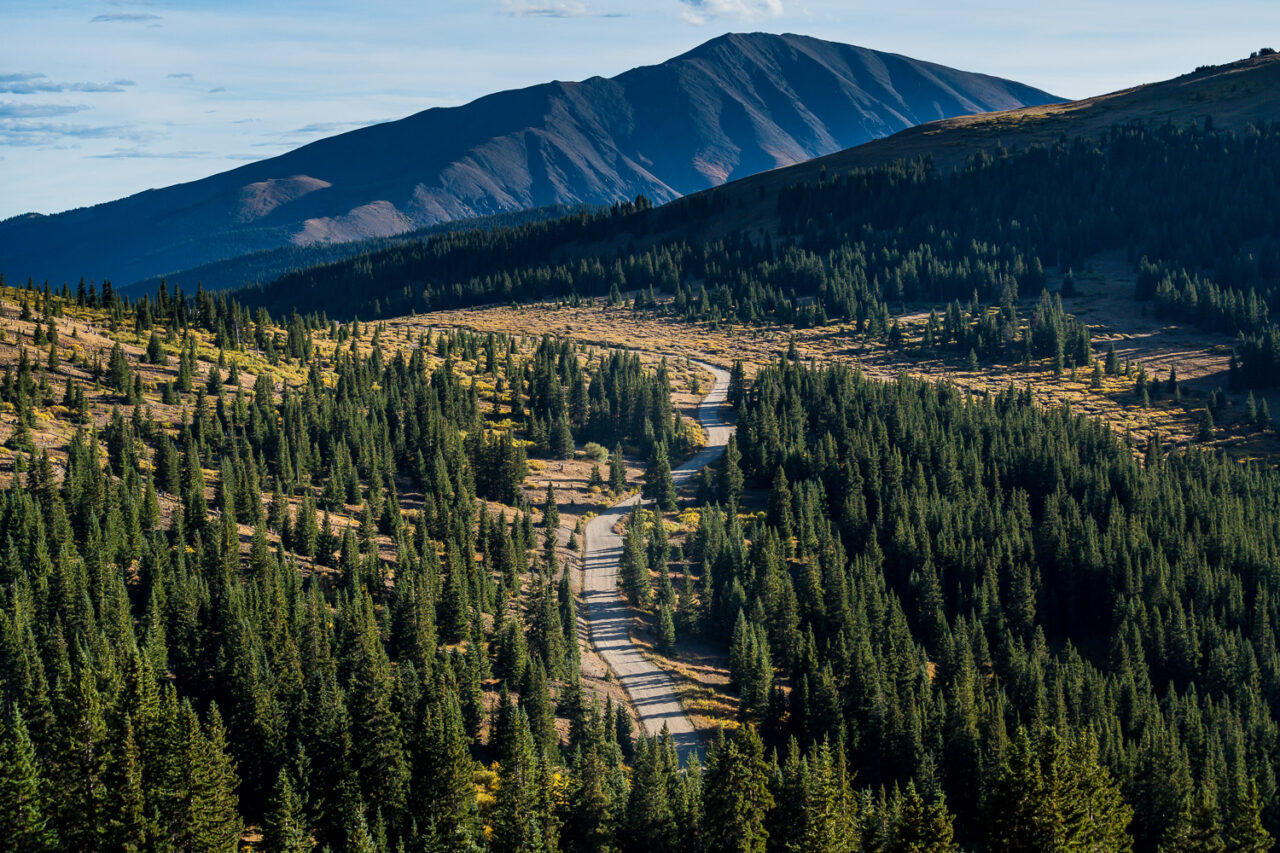
Intentional Choices: Choosing the Right Lens to Shoot Mountains
It may come as no surprise that a wide-angle lens is a must-have for mountain photography. A wide lens allows you to capture the vastness of the scene from the foreground to the clouds above and likely represents the majority of our best shots. I do like also having a telephoto lens for when I want to show depth or compression to demonstrate scale.
One of the best tips that we received early on and have committed to is to zoom with your feet. With zoom lenses, it can be easy to stand there and move the zoom ring hoping to create a great image. That’s not where a great image comes from, instead, you need to be thoughtful and intentional with your landscapes.
Mountain photography, as I mentioned previously, means accessing the mountains and you can’t always carry a ton of gear. You’ll need to focus on the quality of your lens choice because you can’t carry a ton of options with you. A drone is often a worthy addition to your camera bag for capturing unique angles despite the extra weight and assuming you can fly legally where you are going.
Lens Suggestions to Consider
Many landscape photographers like to utilize zoom lenses because they are so flexible and versatile. While I’ve come to love prime lenses for many things, shooting mountain photography is often best done with a zoom lens. The only other lens you might consider is a fast wide angle prime lens if you want to shoot astrophotography. Below are some of my favorite lenses for mountain photography with Sony Cameras as well as some of the things you’ll find in my bag:
Wide Angle Zoom – Sony 16-35mm f/2.8 GM – My favorite lens in the lineup for capturing big landscapes.
Mid-Range Zoom – Sony 24-70mm f/2.8 GM II – Sony’s best mid-range zoom. Tack sharp and lightweight/compact.
Telephoto Zoom – Sony 70-200mm f/4 G – this lens is lighter than the f/2.8 version but also has excellent performance.
Astrophotography Lens – Sony 20mm f/1.8 G – Very fast aperture and a wide-angle view for showing off the stars and the landscape.
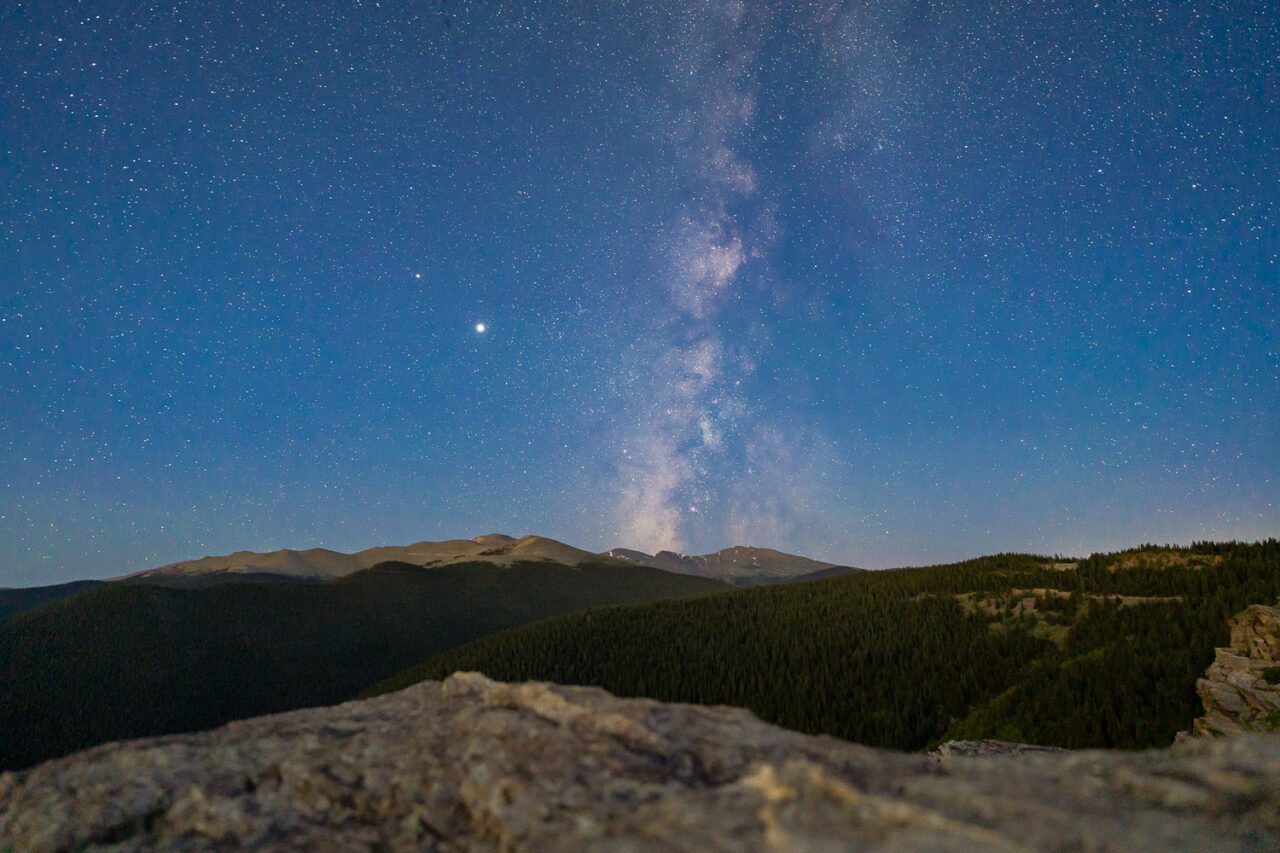
Framing and Composition for Mountain Photography
Mountain photography is about not only what you see but also what you create. Even in the representative style where our photos represent an actual scene, the image will still show how we see the world. How we see and use light is what sets out image apart from a tourist snapshot.
Proper framing and composition can communicate depth or scale. It can also show movement. Rule of thirds, leading lines, contrast, depth of field, symmetry, and negative space or filling the frame are all good skills to practice in your mountain photography. Typically one of the easiest improvements that many budding photographers can make is to remember to utilize the foreground. Another is to just practice proper exposure or stand somewhere other than eye level right in front of a scene.
If you want to tell a more dynamic story or capture a specific moment, you might consider adding some adventure to your photos. Adding in a subject in the scene can also show the scale of the mountains in your photos. This is really where creativity and photography merge. Create more than snapshots, try to translate how the scene feels into your images.
Check Out Our Mountain Photography Prints
If you’ve made it to the bottom of this article, you might be interested in checking out the mountain photography prints in our online gallery print shop. These mountain photography prints were captured in the various places we’ve traveled and every experience in the mountains has taught us more about the nature of life.
If you’re looking for a specific location, don’t hesitate to reach out and join our newsletter to be updated whenever we have a print sale. See you out on the trail!
Read next:
- Tips for Outdoor Wedding Photographers
- Gear Suggestions for Adventure Photography
- Open-mindedness and Creativity
- Morning Routines and Creative Success
- Photography Rule of Thirds
- Meditation for Creativity
- Camera Settings for Wedding Photographers
- Basic Camera Settings
About the author
I am Brenda Bergreen, one half of a husband and wife photography team specializing in Colorado wedding photography and videography and adventure photography. If you need someone to encourage your creativity, I’m here.
Download our free guide on how to build a creative business and a life you love. Don’t hesitate to contact us and let us know how we can help!
In the meantime, remember to…

